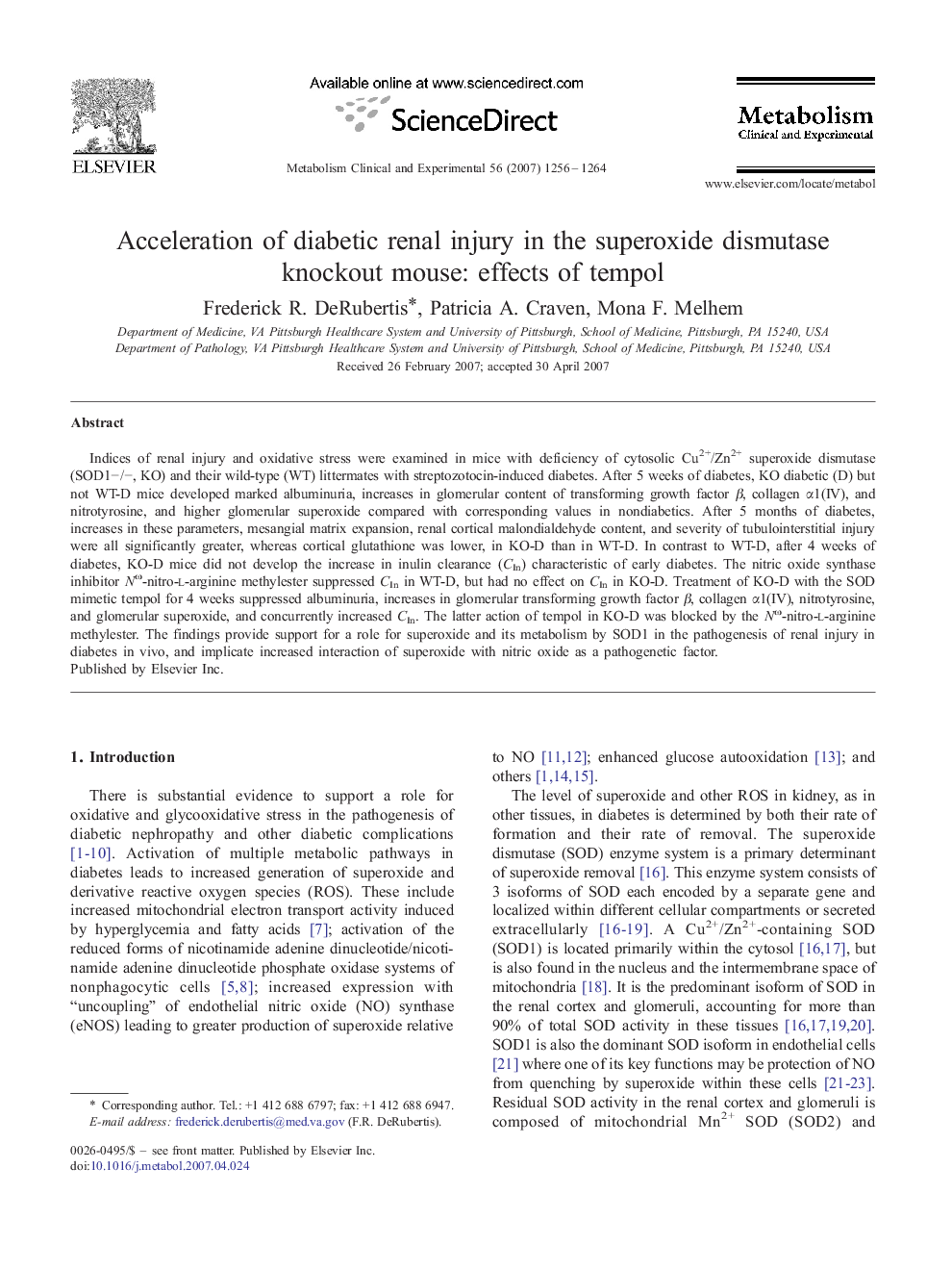| Article ID | Journal | Published Year | Pages | File Type |
|---|---|---|---|---|
| 2807711 | Metabolism | 2007 | 9 Pages |
Abstract
Indices of renal injury and oxidative stress were examined in mice with deficiency of cytosolic Cu2+/Zn2+ superoxide dismutase (SOD1â/â, KO) and their wild-type (WT) littermates with streptozotocin-induced diabetes. After 5 weeks of diabetes, KO diabetic (D) but not WT-D mice developed marked albuminuria, increases in glomerular content of transforming growth factor β, collagen α1(IV), and nitrotyrosine, and higher glomerular superoxide compared with corresponding values in nondiabetics. After 5 months of diabetes, increases in these parameters, mesangial matrix expansion, renal cortical malondialdehyde content, and severity of tubulointerstitial injury were all significantly greater, whereas cortical glutathione was lower, in KO-D than in WT-D. In contrast to WT-D, after 4 weeks of diabetes, KO-D mice did not develop the increase in inulin clearance (CIn) characteristic of early diabetes. The nitric oxide synthase inhibitor NÏ-nitro-l-arginine methylester suppressed CIn in WT-D, but had no effect on CIn in KO-D. Treatment of KO-D with the SOD mimetic tempol for 4 weeks suppressed albuminuria, increases in glomerular transforming growth factor β, collagen α1(IV), nitrotyrosine, and glomerular superoxide, and concurrently increased CIn. The latter action of tempol in KO-D was blocked by the NÏ-nitro-l-arginine methylester. The findings provide support for a role for superoxide and its metabolism by SOD1 in the pathogenesis of renal injury in diabetes in vivo, and implicate increased interaction of superoxide with nitric oxide as a pathogenetic factor.
Related Topics
Life Sciences
Biochemistry, Genetics and Molecular Biology
Endocrinology
Authors
Frederick R. DeRubertis, Patricia A. Craven, Mona F. Melhem,
